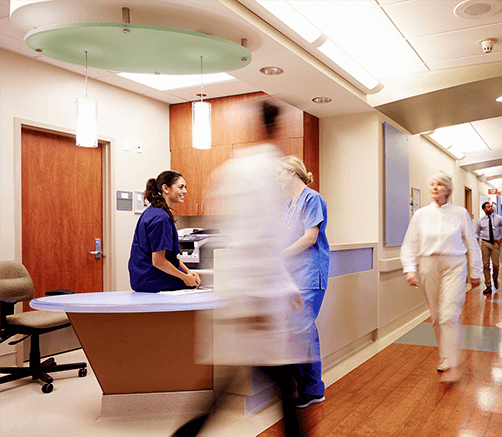July 2025
The Building a Sustainable Future (BSF) programme is our long-term plan to shape health and care services in Herefordshire and Worcestershire. We're working together to create a system that is resilient, affordable, and delivers high-quality care for every patient.
As we continue to drive transformation across our system, here's a round-up of key progress and what’s next in the five main BSF programme areas. Please feel free to share widely with your teams, and for further information about any of these programme areas contact or to contribute your ideas contact hw.

Frailty
We are improving support for people living with frailty by joining up care between neighbourhood teams, primary care, and hospitals.
What’s happened so far?
- The Urgent and Emergency Care (UEC) Efficiencies programme is reducing costs by cutting reliance on unfunded bed capacity and temporary staff. This is helping to stabilise urgent care services, improving consistency for patients and reducing pressure on teams.

- The End-of-Life Care Strategy has reached final draft stage, and the ‘My Wishes’ feature is now live on the patient portal, enabling people to share what matters most to them at the end of life. This supports more personalised and compassionate care.
- The Integrated Hospital at Home model has been approved for rollout, providing hospital-level care in a patient’s own home. This gives people a safe alternative to hospital admission and promotes faster, more comfortable recovery.
- The Modern General Practice Access model is now in place in 78 practices, improving appointment triage, digital access and administrative processes. This allows patients to get help more quickly and enables practices to manage demand more effectively.
What’s next?
- Launch of Phase 1 of Hospital at Home will begin delivering care for eligible patients at home, offering a safer, more familiar setting and freeing up hospital beds for those who need them most.
- An evaluation workshop for Neighbourhood Health accelerator sites in July will bring together learning from local pilot areas. The insights will help shape wider rollout of new community care models.
- A pilot of the digital RESPECT tool will test the use of electronic personalised care planning across settings. This aims to make advance care plans easier to create, share and act on.
- Completion of a catheter care audit will identify where improvements can reduce infection risk and discomfort for patients who need catheterisation, particularly those with frailty or long-term conditions.
Elective Reform
We’re redesigning elective care services to make them more efficient, patient-centred and sustainable.
What’s happened so far?
- Dermatology, Ophthalmology, and Haematology have been identified as priority areas for reform due to high demand and variation in outcomes. Focusing on these specialties will improve care quality and reduce waiting times for thousands of patients.
- SWOT analyses have been completed, and Task and Finish groups are underway in each specialty. These groups are reviewing services in detail and proposing solutions based on clinical input and patient experience.
- A Non-Emergency Patient Transport Services (NEPTS) project has been launched, identifying opportunities for cost savings and better coordination. Improving transport helps ensure more reliable access to care for patients with serious mobility or clinical needs, and increases the availability of transport to help discharge patients from our hospitals.
What’s next?
- Redesign work will begin on new service models for the identified specialties to ensure services are streamlined and sustainable for the future.
- Further development of the Federated Data Platform (FDP) will support smarter use of data to coordinate care, reduce duplication and support decision-making across organisations.
- Advancing outpatient redesign, including wider use of Patient-Initiated Follow-Up (PIFU), remote consultations, and group clinics, will give patients more control over when they’re seen while freeing up clinical time for those who need it most.
Releasing Time to Care
Freeing up clinical and admin time through digital innovation and smarter working.
What’s happened so far?
- Ambient Scribe AI pilots have started in six GP practices, automatically transcribing consultations into clinical records. This saves time for GPs and reduces the documentation burden, helping them focus more on patients.
- Uptake of the NHS App has reached 58% locally, and an ambassadors’ network has been formed to help more patients use it confidently. The app enables patients to manage appointments, prescriptions, and health information, easing admin pressure on practices.
- Development of the digital RESPECT tool and integration of community data is progressing well, aiming to ensure patient care plans and key information are accessible across care settings and services.
What’s next?
- An AI pilot at Wye Valley NHS Trust goes live in June, expanding transcription technology into hospital settings. This will test whether AI can save time in secondary care in the same way as in general practice.
- The NHS App will be extended to include 19 additional specialties at Worcestershire Acute Hospitals NHS Trust, helping more patients manage their appointments and communication with outpatient services online.
- A review of the patient portal platform will be completed, evaluating how well current digital tools are meeting patient needs and identifying where improvements or changes could enhance the experience.
Prioritisation
Ensuring we allocate resources where they’ll have the most impact.
What’s happened so far?
- An ICB-wide prioritisation framework has been developed and is now being piloted to guide service investments and decisions based on clinical benefit, value for money, and population need. This helps ensure limited resources are directed to where they’ll make the biggest difference.
- We’re reviewing four evidence-based interventions (EBIs) – cystoscopy, knee MRI, hip MRI, and lower back pain imaging – where local usage is higher than national benchmarks. The aim is to reduce unnecessary tests and improve the use of diagnostics.
What’s next?
- Continued testing of the prioritisation framework will assess its impact on decision-making and identify areas for refinement, with the goal of embedding a fair and transparent approach across the system.
- Clinical forums will continue reviewing EBIs using data-driven insights, aiming to align practice with national guidelines and improve consistency of care for patients.
Population Health Management (PHM)
Using joined-up data to target health improvement where it matters most.
What’s happened so far?
- A PHM Steering Group has been established and is meeting regularly to oversee progress, set direction, and drive alignment across partners.
- Information governance has been secured for the Magentus pilot, ensuring patient data is used safely and lawfully to support health improvement work.

- There has been good progress on building a unified PHM data architecture and dashboard system, designed to give health and care teams real-time insight into population needs and risk factors.
What’s next?
- The PHM Steering Group will review progress this month, assessing the current state of development and identifying priority actions for the next phase.
- Development of PHM architecture will continue, creating a stronger foundation for system-wide analytics and enabling services to better predict need and personalise care.
- Work will begin with other local ICB partners to align capabilities, sharing learning and infrastructure to improve population health outcomes across wider geographies.
Every part of the BSF programme is helping to create a more joined-up, efficient and person-centred NHS. These changes are already making a difference - and there’s more to come. Thank you for your continued commitment to this shared ambition. We’ll continue to keep you informed with these regular updates.
For further information about any of these programme areas please contact hw.


